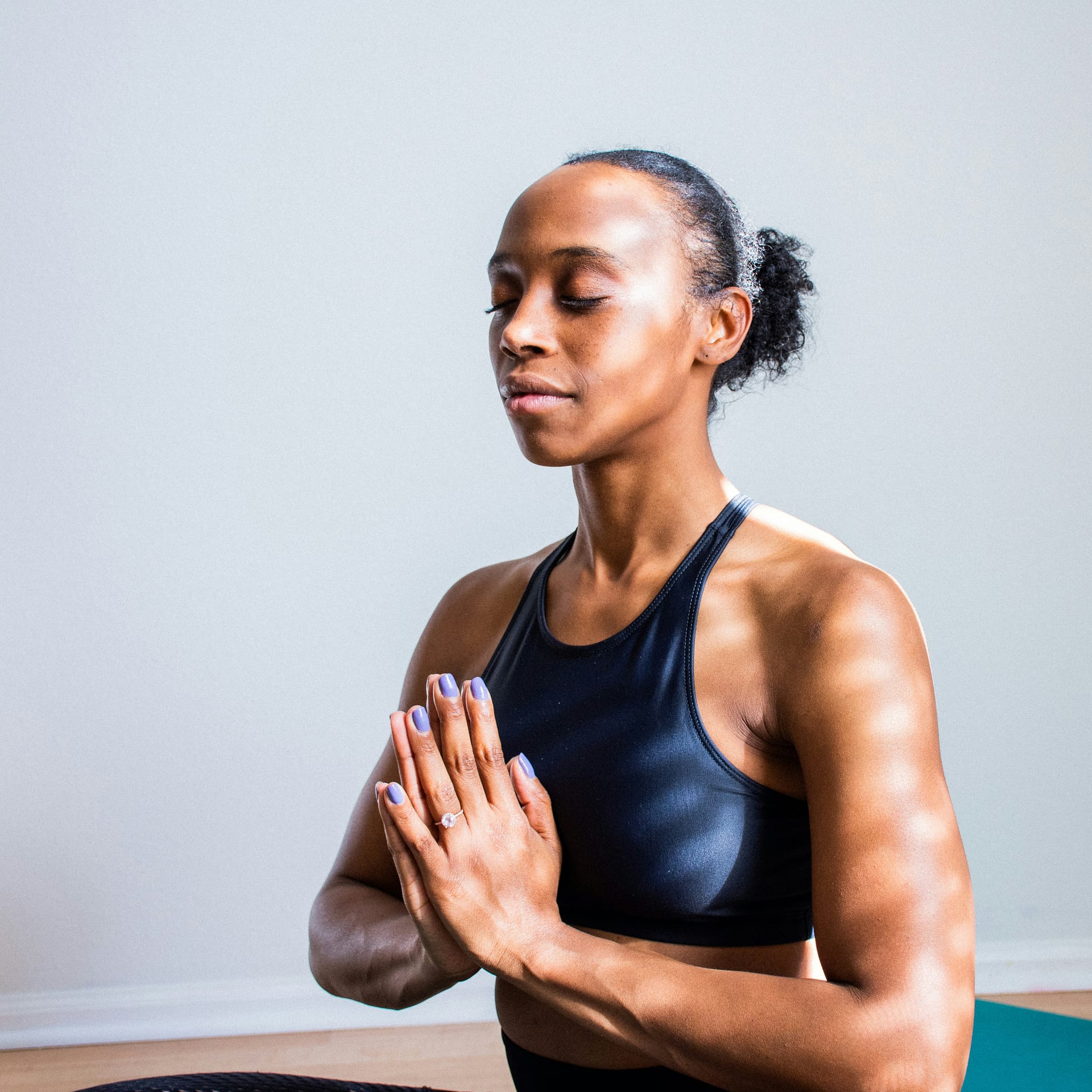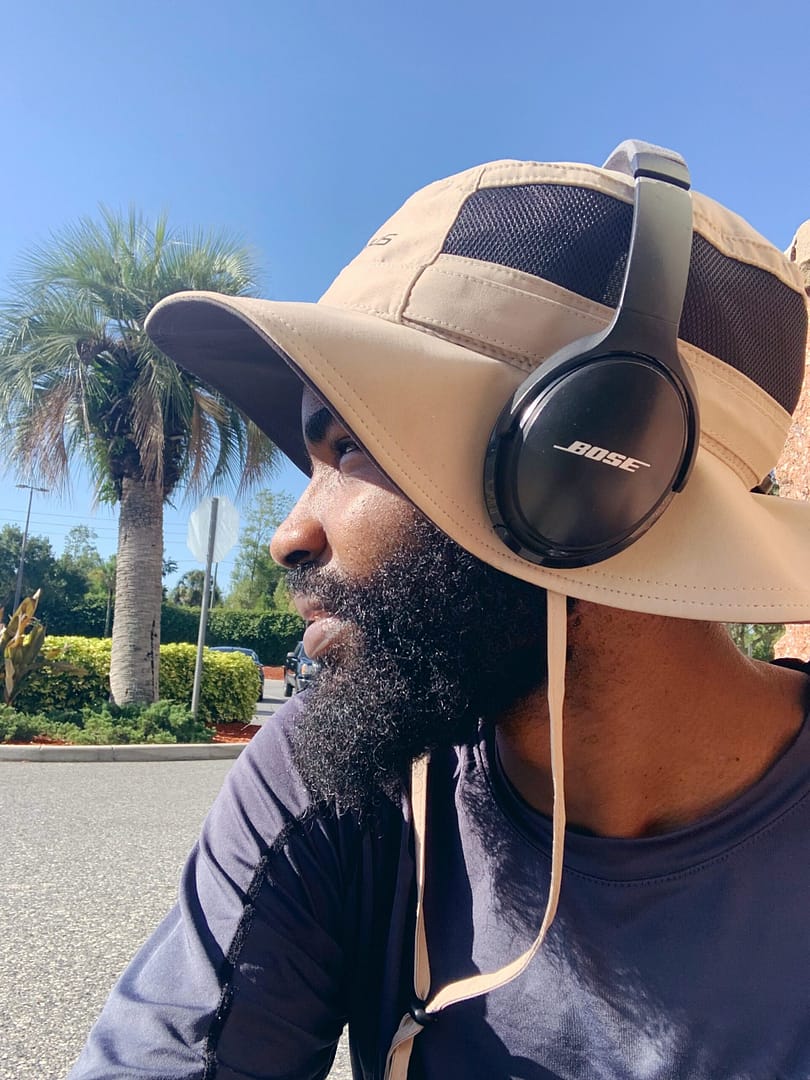Guided Meditation in Six Easy Steps. A simple technique to become aware of your thoughts, feelings, and bodily sensations.
Meditation is simply a way of taking the time to become more aware of your thoughts, feelings, and other bodily sensations.
In this article, we’ll dive into some of the most straightforward techniques that you can apply right now, to start your meditation journey.
So get comfortable, and follow along.
Meditation Techniques: A STEP BY STEP WALK-THROUGH
Step 1.
- Find a designated spot where you’ll be disturbed. If it’s a pleasant–quiet area, consider it your ‘sacred’ or ‘special’ place for your practice.
Step 2.
- Now get yourself in a comfortable position. If you’re feeling tense, you can rotate your shoulders a few times then lift them as high as possible before allowing them to sink back down.
Step 3.
- Keep your back straight. Feet flat on the floor (ideally without shoes). As you maintain a straight back, have your hands rest on your laps or at 75 to 90 degree angle. You may choose to close your eyes or gently gaze at a single spot pass your nose.
Step 4.
- Now take a deep breath.
- Inhale on a count of five… then exhale on a count of six. As you exhale, relax your body a little deeper.
- Slowly fill the lungs, then exhale. Let your body relax.
- Take another deep breath… and relax your body a little more as you exhale.
Step 5.
- Breathe through your nose into your chest until your chest or belly is full. Remember, inhale on a count of five… then exhale on a count of six. As you exhale, relax your body a little deeper.
Step 6.
- Keep Your Focus On your Breath! Good, inhale deep, slow, breaths. Really feel your breath as you inhale and exhale.
Thoughts WILL come up to distract you.
Notice the thoughts the same way you’d noticed clouds passing in the sky. Don’t judge them. Simply return your attention back to the breath.
The easiest way to get in touch with this universal power is through silent Prayer. Shut your eyes, shut your mouth, and open your heart. This is the golden rule of prayer. Prayer should be soundless words coming forth from the center of your heart filled with love.”― Amit Ray, Om Chanting, and Meditation.
Allow your attention to be fully in the here and now.
Start counting each breath as it flows in and out. And when a thought or distraction comes, start the count over again. Breathing more deeply and slowly.
Notice how you are feeling emotionally.
Don’t try to analyze why you’re feeling this way.
Acknowledge it.
Accept what you are feeling at the moment.
Gratitude works wonders
Visualize how great it feels to be alive — to have a second chance to — begin again.
If you made it through this session, congrats!
I can only envision how calm or clear-headed you’ll feel throughout the day.
Sometimes, you may suddenly feel obsessed with specific thoughts and can’t relax.
Don’t worry.
This is totally normal and natural.
Practice this meditation or any guided practice for a while to experience its benefits fully.
Depending on the type of meditation you choose, follow its exact principles.
Whether it’s a mantra meditation, breath-work, or guided meditation, the fundamental purpose of meditating is to feel alive fully.
- In mantra meditation, repeat the mantra(s).
- In breath awareness, breathe.
- In drishti meditation, gaze.
Don’t add anything extra. In everything in life, the simpler, the better.
If you’d like to make meditation part of your morning ritual, consider keeping a journal to track your progress. I’ve created a free-to-use layout sheet to help you stay on track with the practice. If interested, check out link below. And as Donald Walters reminds us, “The more regularly and the more deeply you meditate, the sooner you will find yourself always acting from a center of peace.”
Have a wonderful day.
Download the Meditation layout Sheet
Here are a few similar posts you might also like:
- How to do meditation — go from beginner to advance.
- Seven best-guided meditation Apps (beginner friendly)
- The Benefits of Meditation
- Ten personal growth Ideas for the perfect morning rituals





![Looking At Mindfulness By Christophe Andre [Book Summary & Analysis] andre art](https://mlfwe0uloqyb.i.optimole.com/w:150/h:150/q:mauto/rt:fill/g:ce/ig:avif/https://www.leapessence.com/wp-content/uploads/2018/03/andre-art.jpg)






